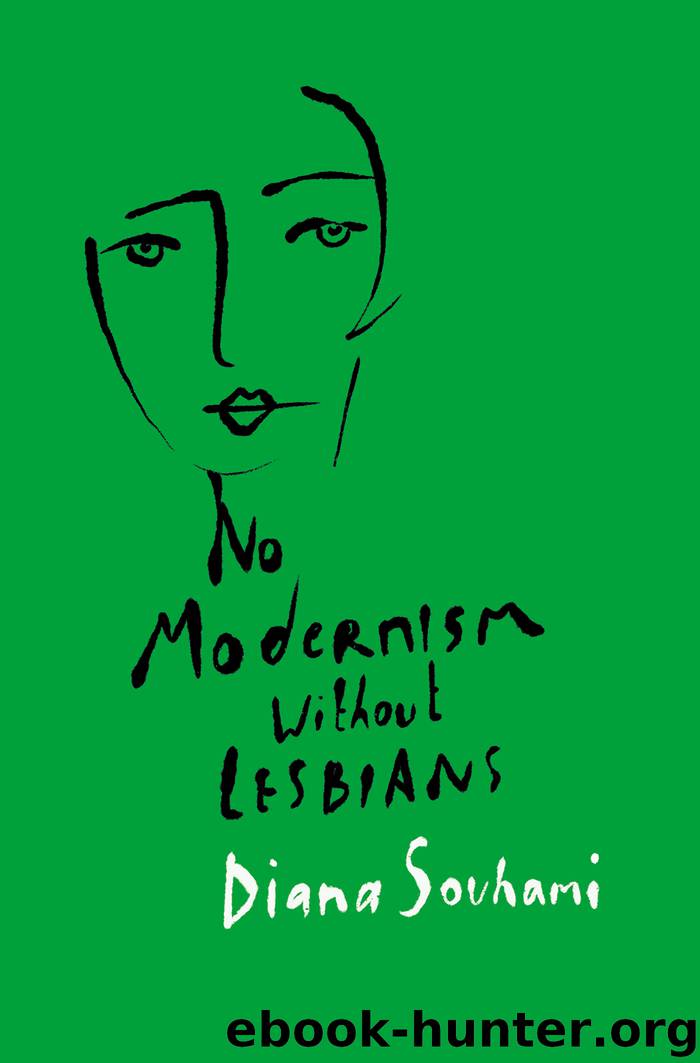No Modernism Without Lesbians by Souhami Diana;

Author:Souhami, Diana; [Souhami, Diana]
Language: eng
Format: epub
Publisher: Head of Zeus
cultural forces
In her writing, as in her life, Natalie scoffed orthodoxies, heterosexuality and male traditions of style and narrative. She was dismissive of the literary elite:
mind pickers and culture snobs… I do not understand those who spend hours at the theater watching scenes between people whom they would not listen to for five minutes in real life.
She wrote mainly in French, in which she became fluent. As a child in Washington she had a French governess; America looked to Europe for its culture. In her teens she went to a girls’ boarding school, ‘Les Ruches’ (‘The Beehives’) in Fontainebleau. The school’s headmistress, Marie Souvestre, was lesbian and founded the school with her partner, Caroline Dussaut. They separated in 1883; Marie Souvestre went to England with another teacher, Paolina Samaïa, and together they started Allenswood, a school for girls in Wimbledon. Among their pupils were Dorothy Strachey1 and Eleanor Roosevelt, who married her distant cousin Franklin Delano Roosevelt. When first lady of America, Eleanor took as her lover Lorena Hickok, known as Hick, a reporter with Associated Press. Hick moved in to the White House and stayed with Eleanor for most of the twelve years of Roosevelt’s presidency. Eleanor kept a photo of Marie Souvestre on her desk.
When she was eighty-three, Dorothy Strachey wrote the novel Olivia about being a pupil at Allenswood, and her passion for Marie Souvestre (Miss Julie). Published by the Hogarth Press in 1949, the year the censorship of Radclyffe Hall’s The Well of Loneliness was finally lifted, and dedicated ‘To the beloved memory of V.W.’ (Virginia Woolf), Dorothy Strachey said she wrote Olivia to please herself ‘without considering whether I shock or hurt the living, without scrupling to speak of the dead’. She wanted to recapture the emotions she felt when she was sixteen. To do so, she said she needed to overthrow the theories and dictates of ‘the psychologists, the psychoanalysts, the Prousts and the Freuds’, whom she accused of ‘poisoning the sources of emotion’, of applying ‘poisonous antidotes’ to the romantic realities of life.
‘Love has always been the chief business of my life,’ Dorothy Strachey, like Natalie Barney, wrote. Her childhood passion was succeeded by other loves. Nonetheless, at the grand age of eighty-three she ‘felt the urgency of confession’, the need to assail and stand up to the cultural forces that had compelled her to conceal her deepest feelings, kept her ‘from any form of unveiling’, forbidden her ‘many of the purest physical pleasures’ and denied her literary expression of who she quintessentially was.
It was a heartfelt cry from an old woman. Dorothy Strachey died in 1960 at the age of ninety-four.
So as a girl Natalie learned something of how to be lesbian and a lot of how to speak French. ‘Being bilingual is like having a wife and a mistress, one can never be sure of either,’ she said. Writing in French freed her from Washington constraints of expression but restricted her readership. In her lifetime she published, mostly privately, five volumes of poetry, three of epigrams, two of essays and three memoirs.
Download
This site does not store any files on its server. We only index and link to content provided by other sites. Please contact the content providers to delete copyright contents if any and email us, we'll remove relevant links or contents immediately.
Ancient Worlds by Michael Scott(2622)
Savage Harvest by Carl Hoffman(1912)
The Monuments Men by Robert M. Edsel(1738)
Cain by Jose Saramago(1493)
The Apogee - Byzantium 02 by John Julius Norwich(1410)
A History of the World in 100 Objects by MacGregor Neil(1310)
The O. Henry Prize Stories 2014 by Laura Furman(1208)
The Unfinished Palazzo by Judith Mackrell(1141)
The Swerve by Greenblatt Stephen(1120)
The Lost Secrets of Maya Technology by James A. O'Kon(1088)
50 Art Ideas You Really Need to Know by Susie Hodge(1053)
Joan Miró by Joan Miró(1029)
4 3 2 1 by Paul Auster(1023)
Cain by Saramago José(1016)
A Piece of the World by Christina Baker Kline(993)
Heretics and Heroes by Thomas Cahill(984)
The Book of Ruby(966)
Raising Hell: A Concise History of the Black Arts and Those Who Dared to Practice Them by Robert Masello(951)
1484244826 by Unknown(900)
